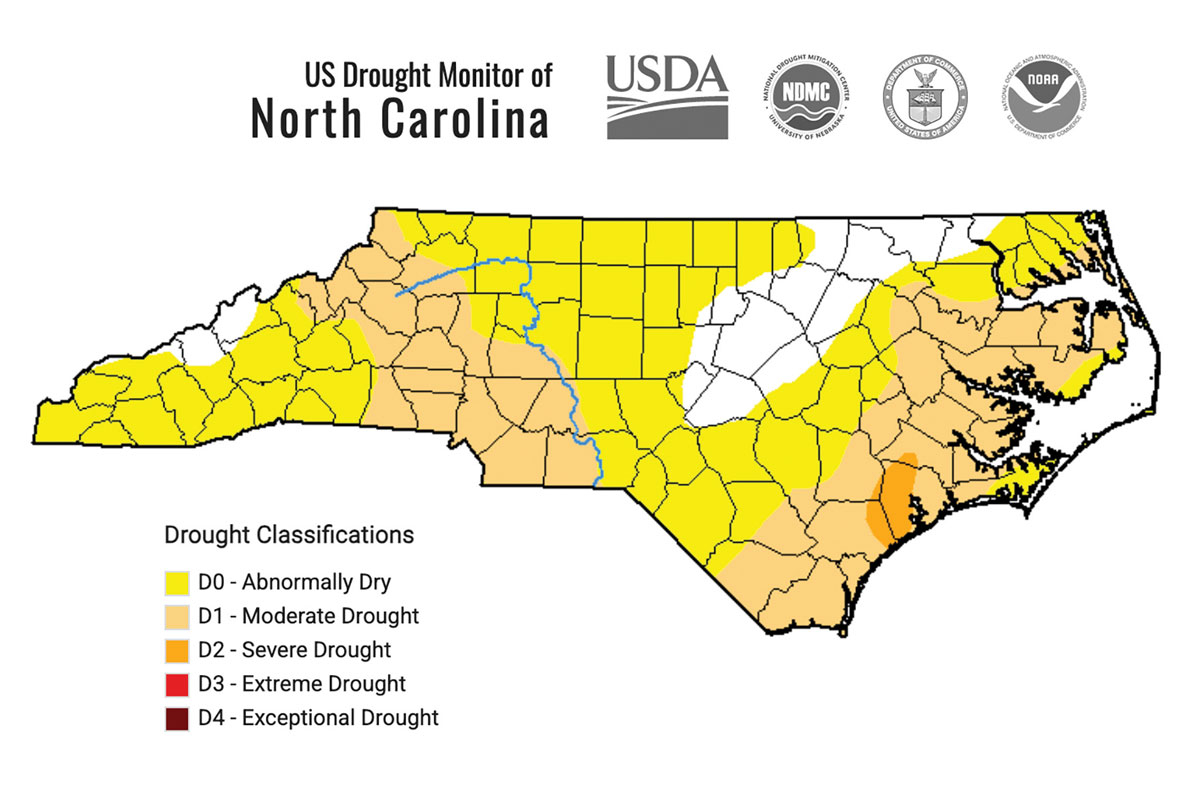Carden play, ARTSaturday planned at Rickman Store
The Rickman Store in the Cullasaja community of Macon County will host two upcoming arts events.
Sylva writer Gary Carden’s play “Bright Forever” will be performed at 7 p.m. on Nov. 19. Carden will attend the show to share and chat with the audience before an after the play. Tickets are $15 and they can be purchase at the Franklin Chamber of Commerce or by calling 828.369.5595.
The annual ARTSaturday with the Suminksy Family will take place on Nov. 20. This is the third year that the Friends of the Rickman Store and the Macon County Arts Council will start the holiday celebrations with music, art and entertainment. Hours are from 10 a.m. to 2 p.m. and the public is invited.
Newcomer will be on Macon County Board of Commissioners
One new face — Republican Ron Haven — will be on the Macon County Board of Commissioners if unofficial voting results from Tuesday night hold.
Incumbent Bob Simpson, a Democrat, lost his seat as 53 percent of Macon County voters — an impressive number for a midterm election — turned out to vote. This right-leaning county did re-elect Democrat Ronnie Beale, the commission board’s current chairman.
Haven and Beale represent the top two vote-getters in District 2, the Franklin area.
Voters also returned Republican incumbent commissioner Brian McClellan of Highlands to the board to represent District 1. McClellan regained his seat by besting Democrat Daniel Allen “Ricky” Bryson, a former commissioner.
Haven, a business owner, has called for a county department-by-department budget analysis to find areas to cut waste. He campaigned vigorously against steep-slope controls, flatly stating at a recent candidates’ forum that he wanted the county’s planning board to even stop study on the issue.
Macon County is the site of the September 2004 Peeks Creek landslide. This was a natural, not manmade, disaster that claimed five lives, and has since shaped the nature of debate here about what should be done about development on mountainsides.
Beale, who defended the work being done by the planning board, campaigned on a record of school-building projects and the work done to set the table for future economic development.
McClellan also has emphasized job creation, and supports offering incentives to companies willing to settle in Macon County.
Macon County Board of Commissioners (District 2, vote for 2)
Ron Haven (R) 5,719
Ronnie Beale (D) 5,539
Charlie Leatherman (R) 5,362
Bob Simpson (D) 4,259
Vic Drummond (U) 2,316
Macon County Board of Commissioners (District 1)
Brian McClellan (R) 7,323Allan (Ricky) Bryson (D) 5,099
Holland keeps his hand on the helm in Macon County
Macon County Sheriff Robert “Robby” Holland, a Republican, has won another term in office — his third — by beating back challenger George Lynch, a Democrat.
Holland and Lynch ran relatively mud-free campaigns that focused on their respective strengths as veteran law enforcement officers. Holland, 43, worked his way up the ladder at the sheriff’s department. He started in 1991 as a part-time detention officer, serving under another popular, seemingly unbeatable Republican sheriff, Homer Holbrooks.
Holland won Macon County with more than 60 percent of the vote.
Lynch, 62, is no stranger to Macon County voters, and represented a serious, if unsuccessful, challenger for Holland. Lynch had 14 years of experience as a law enforcement officer for the U.S. Forest Service.
Holland, during his campaign, emphasized the multiple programs he’s instituted to combat the use of illegal drugs, and the crimes associated with their use. Holland also has placed a strong emphasis on involving the community in law enforcement efforts.
Macon County Sheriff
Robert (Robby) Holland (R) 7,802
George Lynch (D) 5,162
Budget issues top Macon commission race
On this, the seven candidates for the Macon County Board of Commissioners agree: the problems of a dour economy, and the subsequent need to watch every dollar spent and encourage any economic growth possible, is the No. 1 responsibility facing the next set of commissioners.
The number two issue? That, most likely at least in the minds of voters, would be the steep-slope debate. The question on the table is whether Macon County — site of the 2004 Peeks Creek landslide tragedy, albeit this was a natural disaster and not a manmade one — should regulate building on steep mountainsides.
Three seats on the five-member board are open, with the top vote-getters in District I and District 2 winning the seats – one in District I, which represents Highlands, and two in District 2, the overall Franklin area. The other two board seats come open in two years.
Macon County is an increasingly conservative-voting county. The old “outsiders”-can’t-win-truism of most counties isn’t true anymore here, either. Current Commissioner Jim Davis, a Republican now vying for a state Senate position, broke that rule by being elected way back in 1996 to the commission board.
In District I, Democrat Daniel Allen “Ricky” Bryson, a former commissioner, is trying to regain his previous seat on the commission from incumbent Republican Brian McClellan. During a recent candidates’ forum sponsored by The Macon County League of Women Voters, Bryson spoke of his experience (unfortunately for him, that doesn’t delineate him from McClellan) and the fact that when he was commissioner, funds had been routinely set back to offset bad times such as these. He also cited strong support for economic development, schools, and spoke against unfunded mandates passed down by the state.
Bryson did not mention one point in his favor that conservative Macon County might hold against McClellan: a driving while under the influence charge the incumbent commissioner picked up last year. McClellan didn’t mention it, either.
Instead, McClellan talked of the need to offer incentives to companies willing to settle in Macon County. The more jobs, the more breaks from the county, that’s the general idea.
“We need to do that in order to be competitive,” McClellan said.
He also advocated zero-based budgeting, or making each county department start from ground zero when building and justifying an annual budget.
There also wasn’t much fierce talk in the battle for District 2. Ronnie Beale, a Democrat presently serving as chairman, like McClellan, spoke of the new economic development guidelines passed 18 months ago to allow for incentives. He said Macon County is finally getting the tools needed to help attract new jobs.
He spoke of stopping a “brain drain” in Macon County, in which the brightest young minds leave for jobs elsewhere. And he touted the new Iotla Valley Elementary School building. A construction contract was recently awarded to an Asheville company.
Democrat and incumbent Commissioner Bob Simpson spoke similarly, but added that during his tenure, the board of commissioners had helped oversee a new space for Southwestern Community College to operate in Macon County.
Simpson staked out a safe political agenda by expressing his support for children, the elderly, and fire, police and emergency services when it comes to budgeting priorities.
Charlie Leatherman, a Republican former commissioner trying to regain a seat on the board, used several of his four minutes available to emphasize his support for education. Leatherman, it should be pointed out, is an educator — he works for Macon County Schools and serves on the SCC Board of Trustees.
“We don’t have jobs for these kids who are graduating,” Leatherman said. “We don’t have jobs for those people who have lost their jobs.”
Ron Haven, a Republican, said he wants to apply what he’s learned as a business owner to Macon County government. He pointed to the need for a department-by-department budget analysis to find areas to cut waste. Haven also flatly came out against study of a steep-slope ordinance, saying this simply isn’t the time to worry about such things, given the dire economic issues.
Vic Drummond, an unaffiliated candidate, is unapologetically right leaning. He, like Haven, wants to see work stop on a steep-slope ordinance. (He made the small gaffe of saying that no houses in Macon County had been lost to landslides, leading several onlookers to whisper audibly to one another, ‘Hasn’t he heard of Peeks Creek?’)
Other candidates cited a desire to see what the planning board offers up in the way of steep-slope controls before condemning study of the ordinance out of hand.
Drummond criticized taxes being raised during a recession, and made a bid for revaluation of property in the county to take place next year instead of 2013 (it has been postponed from 2011).
Macon sheriffs race features two experienced officers
Two veteran officers, Sheriff Robert Holland and George Lynch, are vying to fill Macon County’s top law-enforcement post.
The campaigns of both men have been remarkable. More for what isn’t happening rather than what has taken place. Both Holland, the incumbent, and Lynch, a former U.S. Forest Service law-enforcement officer, said they are intent on running clean, mudslinging-free campaigns.
And, to date, they have.
Holland, 43, a Republican, is in his second four-year term as sheriff. He joined the Macon County Sheriff’s Department in 1991. And made a steady climb to sheriff: animal-control officer, part-time detention officer, part-time deputy, fulltime deputy, investigator in the juvenile office, supervisor of that office, investigations unit.
Holland, not surprisingly, is running a campaign based on his experience.
“I’ve got eight years as sheriff,” he said. “We’ve gotten a lot of programs going that have been a success.”
Holland said since being elected sheriff, he has placed a major emphasis on combating illegal drugs and the crimes associated with them.
“I’ve really encouraged community involvement,” he said. “People in the community know their neighbor better than we do.”
The Democrat party’s candidate, Lynch, 62, like Holland, has emphasized his experience in law enforcement. He has a military background that includes one year as a military policeman for the National Guard. Fourteen years were spent as a federal officer for the Forest Service, where Lynch investigated, prepared and shepherded through trial more than 200 cases.
Lynch hinted at two areas where his administration would differ from Holland’s. One is more visible patrols in remote areas.
Lynch said he believes the primary duty of a patrol officer is the “protection of life and property,” not traffic control, though he would still want deputies to put the brakes on reckless drivers and drunken drivers.
“Officers need to be seen day and night from the city limits to the most remote areas of the county,” he said, “checking on the security of private property, businesses, churches, schools, homes, nonresidential houses and developments.”
Because of the geographic distance of Highlands and Nantahala from Franklin, Lynch said he wants fulltime deputies assigned to both communities.
He said he does not like “sensational drug busts” in which “buyers and dealers are allowed to continue to buy, sell and ruin lives until one can charge large numbers at once for publicity purposes.”
Lynch said he would strongly consider entering drug taskforce agreements with other agencies rather than use the go-it-alone approach “now in place.”
Proposal to pave, widen Needmore Road met with skepticism
A state proposal to widen and pave a gravel road that runs alongside the Little Tennessee River and near the protected 4,400-acre Needmore Tract is being greeted with caution by conservationists.
“It is a very important stretch of river,” said Stacey Guffey, chairman of the board overseeing the Little Tennessee Watershed Association. “As a group, I’d say we’re not opposed to improvements that would help river quality. But, if something is going to be done, we want to see it have as little impact as possible.”
A portion of Needmore Road is a rough, one-lane gravel road that parallels N.C. 28 in Macon and Swain counties but on the opposite side of the river. The state Department of Transportation is proposing to pave and widen 3.3 miles of Needmore Road from one lane to two lanes. The new road would have a minimum width of 18 feet. Additionally, work would take place on the shoulders of the roadway.
“I think Needmore Road needs to see some improvement, but if they’d pave it just as it was, I’d be happy,” said Cheryl Taylor, a resident of the Needmore community and leader of the group Mountain Neighbors for Needmore Preservation.
Taylor said she and members of her group are concerned about the scope of the transportation department’s proposal.
“(The Needmore Tract) is a place to go to enjoy the area and outdoor recreation,” she said, adding that those qualities need to be protected.
The project is estimated to cost $6.5 million and would target the section from Byrd Road in Macon County to existing pavement in Swain County. Work on three of the four sections making up the project would get under way in 2012. The final — and most difficult section from an engineering standpoint — is slated for 2015.
“This alternative will improve the entire facility to conform to NCDOT Division 14 Secondary Road Standards,” states a meeting notice issued by the transportation department. “The proposed alignment calls for widening the roadway away from the Little Tennessee River.”
Joel Setzer, DOT division engineer for a 10-county region that includes Macon and Swain, said the paving proposal dates back to about 1997. Justification for the road upgrade is based on the number of houses served and traffic counts. Though there aren’t many houses along that stretch of road, Setzer said the traffic counts are high “as compared to other gravel roads.”
The purpose of the project is as follows:
• To improve the quality of travel for local residents who currently use the road.
• Reduce sedimentation from Needmore Road into the Little Tennessee River.
• Avoid or minimize adverse impacts to the existing high-quality natural resources.
The transportation department has worked on environmental assessments of the project, Setzer said, and has plans to deal with the Anakeesta-type rock found in the area. These rocks contain high levels of iron-sulfide and can create acidic runoff.
About 4,400 acres along the Little Tennessee River known as the Needmore Tract was saved from development and turned into a state game land overseen by the N.C. Wildlife Commission six years ago. Needmore Road, in places, borders the protected tract.
Nantahala Power and Light bought the property in the 1930s with the intent of damming up the Little Tennessee River for hydroelectric generation. The power company never built the dam. Instead, the bottomland was leased to farmers. Local residents used the remainder for hiking, camping and hunting.
Duke Power in 1999 took over Nantahala Power and Light and decided to sell the land for development. Public outcry led to a massive, five-year campaign to save the tract. Local residents, conservationists and the Land Trust for the Little Tennessee worked together to raise $19 million in state grants and private donations to pay Duke. The Needmore Tract was then placed under state protection as the Needmore Game Land.
Aklea Althoff, who operates an office in Franklin for the environmental group Western North Carolina Alliance, echoed calls for restraint when it comes to tinkering with Needmore Road.
“We know that some improvements need to be made because of the sedimentation problem from the gravel road,” she said. “But it needs to be as minimal as possible because of this pristine ecosystem.”
Want to get involved?
WHAT: Presentation on Needmore Road paving proposal sponsored by WNC Alliance environmental group.
WHEN: 6:30 p.m. on Thursday, Sept. 16.
WHERE: Unitarian Universalist Fellowship of Franklin, Sierra Lane.
Learn More:
WHAT: Question-and-answer session, followed by public hearing sponsored by N.C. Department of Transportation.
WHEN: Q&A from 4:30-6:30 p.m.; public hearing starts at 7 p.m., September 21.
WHERE: Southwestern Community College in Swain County, known locally as the old Almond School, off U.S. 74, 5.5 miles west of Bryson City.
SCC eyed for federal law enforcement training
Four donated modular units should help ease a space crunch at the Public Safety Training Center in Macon County, but the fix could be short-lived.
The training center, run by Southwestern Community College, might soon become one of a handful of sites in the country where federal law enforcement officers can get high-level training.
While thousands cycle through every year for basic police, fire and rescue training, demand may be stiffest for a handful of coveted slots in a four-month academy for federal park rangers.
Men and women seeking seasonal, or temporary, law enforcement jobs with the National Park Service train there now. But the college hopes to offer more federal training next year — by increasing the number of academies it holds and adding training for fulltime federal law enforcement officers.
The National Park Service would be the primary beneficiary. Some other federal agencies also could use men and women commissioned through the training center.
“There’s a lot of potential with this federal accreditation,” said Curtis Dowdle, director of the training center. “But we would have to meet a number of policies and regulations, such as instructors who hold certain credentials, equipment requirements, enough square-feet-per-student requirements.
“Record keeping is probably the biggest part — we’d have to house the records on the students forever, and that’s a big space issue,” Dowdle said.
Right now, all training for fulltime federal law enforcement officers takes place at the Federal Law Enforcement Training Center, headquartered in Glynco, Ga. Dowdle said the federal government estimates having a select number of sites across the nation offer the classes could save taxpayers more than $40,000 per government employee.
Space problems
Macon County Schools donated the modular units to SCC, and county commissioners last week agreed to spend $17,500 from the county’s contingency fund to pay to move them. They were previously used by two of the county’s schools for additional classroom space. Macon County has been building new schools and no longer needs them.
“It services the whole region, even the nation,” Ronnie Beale, chairman of the Macon County Board of Commissioners, said of the center.
Steve Stinnett, chief ranger for the Blue Ridge Parkway, agreed that the training center plays an important role.
“The center has been very helpful to us,” said Stinnett. “They’ve really made it available.”
In addition to having access to a pool of qualified applicants when hiring, Stinnett said the National Park Service receives a professional boost because rangers working on the Parkway or in the Smokies are sometimes tapped to teach at the training center.
“People who teach something tend to do it better,” he said.
In addition to classrooms, a computer lab and more, the center has a driver-training course, shooting range and a 4,100-square-foot, three-story building used to train fire and rescue workers.
Each modular unit will provide an additional 864 square feet of space to the training center.
Simulators for emergency medical service workers will be set up in one unit. A use-of-force simulator for law enforcement officers will be housed in another, as will exercise equipment. One unit will add general classroom space.
But it’s doubtful the four units will provide adequate room for long. In addition to seeking the federal accreditation required to train fulltime federal law enforcement officers, Dowdle and SCC are considering other expansions.
‘Growing smart’
Two, 30-member academies for training the seasonal federal workers are currently offered. The academy starting in January has a waiting list; 15 men and women already have signed up for the second academy, which isn’t until August of next year. SCC, in response to the demand, is considering holding three academies each year.
Federal Law Enforcement Training Center officials did not respond by press time to an interview request.
“If we grow, we want to grow smart,” Dowdle said, emphasizing the community college’s need to weigh each expansion carefully.
An academy lasts four months. If another one is held, SCC — which under state law cannot operate student housing — will need to find more places for the students to live. The students now rent directly from people in the community.
“We must find more housing, unless we have an investor come forward who wants to put something up,” Dowdle said.
A state-of-the-art firing range is also being considered. This would be an outdoor range similar to one used by the federal government in Glynco. A bullet trap system would collect the lead, protecting both people and the environment. The firing range currently used by SCC is behind the water-treatment plant in Sylva. It has no trap system and just 10 lanes. That’s a problem when the community college is trying to train 30 cadets at a time, Dowdle said.
Angling for floor space in the old Cowee school
From the Macon County Fire Department to a persistent group of contra dancers, a long list of groups is vying for the chance to use the old Cowee school once it is vacated by students in two years.
Stacy Guffey, who is helping to coordinate the effort, more than welcomes the interest.
“I’ve been encouraging folks who haven’t been in the valley long, and folks who’ve been here for generations [to participate],” said Guffey, a consultant with The Land Trust for the Little Tennessee. “I think they all need to be at the table.”
The Cowee School was built in the 1940s and is still used as an elementary school today. It’s a fairly large school built out of local stone, which lends it a beautiful historic look, Guffey said.
Students from both Iotla and Cowee schools are currently crowded into the elementary school as they wait to move to the new consolidated North Macon elementary school by 2012.
Macon County commissioners have committed to take the building over from the school system and reserve it for community use. What that use entails is the question of the hour.
The many county departments interested in claiming space include the economic development commission, the sheriff’s department, the library, the recreation department and emergency medical services.
Incorporating county offices at the Cowee School simply makes financial sense, according to Guffey.
“It helps keep the lights on and keep the yard mowed,” Guffey said.
Other groups officially interested include Southwestern Community College, the Chamber of Commerce, the Eastern Band of Cherokee Indians, and a plethora of community groups.
Some are itching to hold basketweaving and other heritage classes there, while others want to display quilts. Still others are craving space to contra dance the night away. Dancers say the closest permanent contra dance floor requires a long drive over the mountains at night to Sylva.
Guffey said another possibility is providing the school’s commercial-grade kitchen to local farmers and holding food processing classes.
He’s heard from a strong contingent of local families who are adamant about keeping the school’s walking track, baseball field and playground in tact.
Ultimately, having a mix of uses would be ideal, Guffey said.
“It’s an opportunity to have a lot of things in on spot,” said Guffey. “It also makes it easier in terms of sustaining it financially.”
Input sought
A two-day public workshop will be held on the future use of the Cowee School and its role in the greater historic district. The public session runs at the Cowee School from 4 p.m. to 8 p.m. Thursday, Aug. 12, and from 9 a.m. to 3:45 p.m. on Saturday, Aug. 14. Free lunch provided at noon on Saturday in the cafeteria.
828.371.1754 or This email address is being protected from spambots. You need JavaScript enabled to view it..
Super Wal-Mart sails into Franklin despite opposition
“I’ll tell you what this is, and I’ll tell you what it’s not,” said Franklin Mayor Joe Collins, opening a public hearing on a special use permit for a proposed Wal-mart Supercenter just outside the town limits.
Collins had anticipated that the capacity crowd gathered in the town hall on Monday night had come to express their opinions about whether they wanted a new Wal-Mart. But he was keen to limit the discussion to a very narrow topic: the size of the building’s footprint and a request for larger signs.
“This is not the time or the place to have a general discussion about whether you do or do not want to have a Wal-mart,” Collins said.
Developers Bright-Meyers, LLC, appeared on behalf of Wal-Mart to secure a necessary special use permit to proceed with the new store.
According to Collins, the public hearing was a carefully proscribed step in a process that began on May 21, when the application was first submitted.
The project’s special use permit application was vetted in a neighborhood compatibility meeting on June 8 in which nearby property owners voiced their opinions, and it was stamped for approval by the town’s planning board on June 15 after a thorough fact-finding process.
At the end of Monday night’s hearing, which was full of opinions from opponents and supporters of the project, the town board voted 6 to 0 to approve the special use permit and open the way for the store. But the vote didn’t do anything to dispel the idea that Wal-Marts are still controversial. The hearing was boisterous and at times contentious, as supporters and critics of the project shouted back and forth.
The proposed Wal-Mart Supercenter would be located at the corner of Wells Grove and Dowdle Mountain roads just off of the N.C. 441 bypass. The 33-acre site is outside the town limits, but within its zoning district and adjacent to the site of a recently constructed middle school.
The town’s unified development ordinance, created in 2007, requires any building over 30,000 square feet to go through a special use permit process.
The Wal-Mart Supercenter will measure 120,000 square feet and include two additional outbuildings of 32,000 square feet and nearly 800 parking places. Wal-Mart also wanted larger signs than are allowed under the town’s ordinance — one on the side of the building and one at the development’s entrance.
Town Planner Mike Grubermann, who has overseen the application process, said the developer’s proposal met the standards of the town’s universal development ordinance in all respects except the two conditions outlined in the special use permit application. He said the roads that provide access to the site are overseen by N.C. Department of Transportation and would require their approval, but traffic counts provided by the developers met his department’s standards.
Franklin developer Marty Kimsey summed up the case for those in support of the special use permit, saying that in a down economy, the new store offered jobs and a boost for the private sector.
“The bottom line is that this site will not be used as a Wal-Mart unless the special use permit is given,” Kimsey said.
Opponents of the project questioned whether Wal-Mart would bring new jobs or hurt existing businesses. They pointed out the potential environmental impact of its placement on the banks of the Little Tennessee River and raised concerns about its effect on traffic patterns in close proximity to the new school.
“I don’t think you could choose a worse area to build something that big,” said Mike Kegan, a resident of Dowdle Mountain Road.
Collins, presiding over the hearing, policed the comments closely at first, but as the hearing wore on, the speakers increasingly used the microphone to talk about their general views on having a new Wal-Mart in town.
John Cantrell, a former high school teacher who was against the permit, was exasperated when Collins cut him off. Cantrell complained about the proximity of the giant commercial complex to the nearby middle school, but Collins deemed them unrelated to the permit application.
“Well, who is it, who is supposed to hear these concerns?” Cantrell asked.
“I don’t know. It’s not us. Not here,” Collins said.
After the hearing was closed, Collins explained the guidelines for public hearings on special use permits are governed by state statutes and that, at the advice of Henning, he attempted to keep the discussion focused on the issue of exceeding square footage requirements.
“It may be that there are [towns] that take a looser approach than this, but I think that’s risky,” Henning said, adding that the developers could appeal the vote of the board if they felt the hearing was stilted.
Kim Hibbard, general counsel for the N.C. League of Municipalities, agreed that quasi-judicial hearings must be held to a different standard from other types of public hearings.
“If it was a quasi-judicial hearing, there are different rules. It would need to be relevant to the situation,” Hibbard said.
However, exactly how much of the comments should have been reined in is subjective.
In the end, in spite of Collins’ best efforts, the meeting did provide a forum for the public to express their opinions about the proposed Wal-mart. While more members of the public spoke in opposition to the project than in support of it, the decision rested with the board and it chose to grant the application without requiring any additional measures from the developers.
Should the survey have disqualified Alderman Scott?
Franklin Alderman Bob Scott recused himself from the vote on a special use permit for a Wal-Mart Supercenter this week after conducting an online survey on the issue. Town Attorney John Henning said he believed the survey compromised Scott’s impartiality, citing state statutes that govern the procedures for quasi-judicial public hearings.
The pertinent passage in G.S. 160A-388 says that “impermissible conflicts include, but are not limited to, a member having a fixed opinion prior to hearing the matter that is not susceptible to change.”
Kim Hibbard, general counsel for the N.C. League of Municipalities, said determining whether Scott had compromised his impartiality was ultimately a judgment call.
“Are they really impartial? Have they fixed their opinion already? Have they been getting communications from one side or the other?” Hibbard said. “That’s where you would need to make your judgment, whether the actions fall into that category.”
Scott said his survey was an attempt to gain perspective on the public’s opinion.
• View the results of Scott's survey
“All I was trying to do before all this came up was just find out how people felt. I wasn’t trying to make a determination of whether it was a pro or con, I was trying to feel what the feeling of the public was,” Scott said.
Scott also questioned whether the other aldermen were impartial, adding that it seemed they all had their minds made up which way they were going to vote prior to the meeting.
He did confirm that he would have voted against granting the special use permit had he been allowed to vote.
“I am concerned. If we have this ordinance then allow variances because it is Wal-Mart, is that fair? Why do we have the ordinance if we are going to grant exceptions?” Scott said.
Scott’s public survey had 329 respondents. Over 75 percent of them were in favor of the Wal-Mart. Over 80 percent had a favorable opinion of the company. Perhaps the most interesting response to the survey showed that 40 percent of the respondents thought the public should have a say in the store’s design scheme.






















